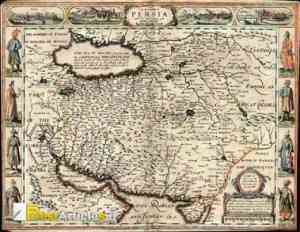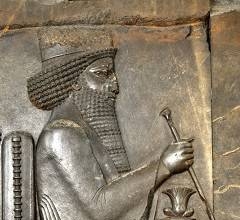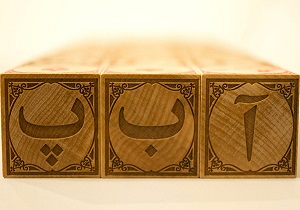Different stone ages
In this post, we are going to Iran in different stone ages:
1:Iran in the Middle Paleolithic period
2:Iran in the new Paleolithic period
3:Iran in the Neolithic period
4:Iran in the Paleolithic period
5:Iran in the Old Paleolithic period
Iran in the Middle Paleolithic period :
The evidence related to the Middle Paleolithic period in Iran is better than the previous period. The works of this period have been obtained from different parts of Iran. In terms of dating, this period is located in a range of dates where carbon experiments 14 It is possible to determine the age of the works. Therefore, it is possible to obtain more detailed information about the cultural situation of this period. It seems that this cultural period in Iran started from about 100,000 to 80,000 years ago.
Most of the tools and stone products of this period can be classified as Mousterian (Moustrian) classified. The production of these types of tools has been common from Western Europe to North Africa, and the Near East to Central Asia. Although the exact date of the decline of the Musterian-type hand tool culture in Iran is not clear, but according to the vast majority of anthropologists, this culture ended about 40,000 years ago.. Therefore, it seems reasonable to imagine the duration of this cultural period in Iran between 50,000 and 50,000 years ago.
The famous ancient sites of this cultural period in Iran have been identified in most of the Ebersan mountain ranges, Azerbaijan, Kurdistan and Lorestan regions.. Works from this period have also been found in Mazandaran, Khorasan and Khuzestan. Inside the central plateau of Iran, one place has been introduced around Tehran, and another place in Kerman. In Ladiz district in Baluchistan, which is the center of Ladizian culture, no works from the Musterian period have been reported yet.. The best examples of this cultural period have been identified from different ancient places near Khorram Abad in Lorestan. Artifacts obtained from "Kanji" caves or "Arjaneh" rock shelter(please)"Moon" cave, "Homian" rock shelter located in the Khorramabad highlands, (The latter place, at an altitude of approx 2000 It is located one meter above the sea level and is among the highest places where the Stone Age artifacts have been found in the Near East.), are representative of the Middle Paleolithic period in Lorestan. In the area of "Helilan" in the valley of the "Simre" river, which is at an altitude of approx 900 It is located one meter above the sea level, also, in seven places, the Middle Paleolithic traces have been identified, which include : "Pol Parik", "Gharvila" and "Gharhoshi".
The works of this period have also been identified in "Kagika" near the city of Kermanshah.
In the same area, in "Biston Cave" and "Vervasi" rock shelter, and near them in "Khar" cave.(Mer Khar = big cave) Artifacts from the Middle Paleolithic period have been identified with typical Mousterian stone tools.
In addition to these areas, which should be considered the gathering centers of groups belonging to the Middle Paleolithic period, from ancient places scattered in Iran such as : Jahrom in Fars and in a place located in the valley of the "Ker" river near Shiraz, as well as near "Tel Iblis" in Kerman or "Gaz Tamtmeh" near Lake Urmia, the works of the Mousterian period have also been identified..
In the "Ke Aram" cave in Gorgan, works similar to the works of Mostrin mountains of Ebersen mountains have been found. Recently, the author has succeeded in finding Middle Paleolithic artifacts in the Mesila Basin, located near Varamin, in the south of Tehran.
Iran in the new Paleolithic period:
Most of the works obtained from the New Paleolithic period in Iran are from the region of Abersan Mountains (Zagros) have been collected and although there is a lot of variety in the stone tools, it seems that the way of life and tool-making techniques were gradual in this region from the Middle Paleolithic to the New..
Another cultural characteristic of the New Paleolithic period is the influence of regional and local cultural characteristics on the way of making stone tools.. The works of this period, which were obtained from the "Yafte" cave near Khorramabad, Lorestan, are about thirty-five thousand years old..
One of the industrial characteristics of the New Paleolithic period in Iran is the making of very small stone tools, which are called "small blades"..
In Khorram Abad, in addition to the "Yafte" cave, the "Arjaneh" and "Pasangar" caves also found works of this period..
In the west of Iran, in the "Kher" cave(Mer Khar = big cave) And the rock shelter "Varvasi" near Kermanshah has also been identified as new Paleolithic.
In the Helilan Valley, in the caves of "Marzour", "Margurglan Sarab", "Darmar" and "Google" cave, artifacts belonging to the late New Paleolithic period of Iran have been identified..
Although the precise beginning and end of this period in Iran is not clearly known, but it seems that this culture continued in Iran about eleven thousand years ago until it finally ended with the beginning of the Paleolithic period..
Iran in the Neolithic period:
At the end of the last stage of the Paleolithic, which used to be called the Mesolithic Age, and today there is a general agreement to call it the Paleolithic Age, a new era began, which was called the Neolithic Age with the changes that took place in the industries and way of life..
All the incidents and events that took place so that humans stop gathering food, hunting and fishing for the continuation of life and enter a new stage of cultural life by producing food, which we continue today, from this era. The so-called Neolithic culture has begun.
This era in the Middle East and Iran earlier than 9000 It didn't start the previous year, while in other parts of the world it sometimes started a few thousand years later.
In Iran approx 9000 Last year, groups of human societies by settling in one region and finally one place, passed the period of permanent migration from one region to another and from one place to another, and the period of food production and living in one place. started.
Compared to other cultural periods, this period has several characteristics, among which are the changes that occurred in the appearance of some stone tools to change their function and turn them into more efficient tools for their technical needs..
Stone tools were quickly specialized. All kinds of blades, scrapers and graters, chisels and drills were made for special applications and special tools suitable for agricultural production were also added to them.. This group consisted mostly of stone mortars, mortar handles, stone grinders and satores for crushing the stalks of legumes and grains and the like..
The Neolithic Age in Iran can be divided into several shorter periods based on the industrial developments of tool making or the way of life.. What has been common is the division of this period into two "Neolithic period before the production and use of pottery" and "Neolithic period with the production of food and the use of pottery".. If this division can be accepted for the limited region of the Near East and the Middle East, it is unacceptable considering human culture at the world level..
For example, in Japan, the Neolithic period began about ten thousand years ago, and from the beginning with the production of pottery called "Jamun" pottery.(ham) It is famous, it has been accompanied. In addition to pottery, the people of the Jamon period also used stone vessels as well as bows and arrows and lived in small enclosures.. These people provided their food through gathering and hunting. The first food producers around the 3rd century BC in Japan through the cultivation of rice started to meet their food needs, which coincided with the Yayoi period.(Yayoi) Began.
Iran in the Paleolithic period :
Although most of the researchers start this period in Ebersan region (Zagros) They have imagined about thirteen thousand years ago, but some believe that this culture was derived from the Paleolithic culture about twenty thousand years ago and continued until the beginning of the era of food production through agriculture and animal husbandry.. Some archaeologists had also previously studied this period under the name of "Mesolithic"..
In general, the stone tools of this period are smaller and more delicate than the stone tools of the previous period. In this period, different types of stone blades were made and different types of stone drills were produced.
Small and delicate triangular blades were used to produce scythes for reaping grain. These small blades are placed together in wooden, bone, or horn handles and they were fixed with the help of natural bitumen in the place of the cracks created in the handles..
Currently, the remains of the first Paleolithic communities in the Mazandaran Sea Basin have been found in some caves near Shahr, which have been inhabited since about twelve thousand years ago..
These caves are: : "Belt", "Hato"(Hutu) and "Ali Tepe".
Of course, it seems that "Ali Tepe" cave was abandoned about eleven thousand years ago and "Hato" caves(Hutu) and "Belt" a little later around the middle of the 7th or 6th millennium BC (Nine thousand or eight thousand years ago) They were completely abandoned.
In any case, it seems that around seven thousand years ago, the Paleolithic period in Iran has completely ended and the life of agriculture and providing food has been replaced by the life of gathering and hunting..
Iran in the Old Paleolithic period :
According to the simple stone tools that have been obtained from humans in the eastern and southeastern regions of the African continent, about four million years have passed since the appearance of humans on this planet.. Anthropologists have called this period the "Paleolithic" era, and according to the changes that have occurred over time in the character of these hand tools, the Paleolithic era has been divided into three periods: old, middle and new..
Archaeological surveys – Anthropology in today's Iran is both new and limited to identify the Paleolithic period. Due to these two things, the obtained information is also very small and within the scope of suspicion. But it seems that according to the natural geography and climatic condition of Iran, in this land, small groups of people have been able to live and meet their food needs in a scattered manner.. These groups have provided their food by collecting vegetable products that can be collected and used in Iran as well as by hunting animals and catching aquatic animals and maybe birds. Very simple and according to the type of food, they benefit from stone, wood and animal bones. Due to the age of this period, tools and tools made of wood and bone have been completely destroyed, and only stone tools have been collected by anthropologists through archaeological investigations from different parts of Iran..
Because the works of the old Paleolithic period, which have been reported in several regions of Iran, have been presented based on one chapter, there are still ambiguous points about their authenticity.. But, since these reports are currently included in the writings related to this period of human life in Iran, until more accurate documents are obtained, we are forced to present them as documents and documents of the Paleolithic period. We are in Iran, especially its old period.
These documents have been identified from three regions of Iran, which are: :
- An area near "Baqbqo", about one hundred and forty kilometers from Mashhad, around the dry bed of "Kashf Rood" in Khorasan..
- Artifacts containing several stone implements have also been obtained from an area located in Azerbaijan, in the triangle between Maragheh, Tabriz, and Mianeh, which reportedly belongs to the Old Paleolithic period..
- The stone tools obtained from the Ladyz region of Sistan are 100,000 years old, and in terms of the tool making technique, they are classified as Ashulean, the newest stone tools of the Paleolithic period..
Considering the distribution of the areas representative of the Old Paleolithic period in Iran, there is no doubt that it is not possible to investigate and research about the Old Paleolithic in Iran alone and without considering the situation of the neighboring areas.. On the other hand, the studies related to the Paleolithic period in the neighboring areas have either not been done or are so confused and unacceptable that they cannot be relied upon.. For example, in Turkmenistan, the studies conducted during this period do not correspond to the scientific reality in any way. Because all the stone works were attributed to the Mesolithic and Neolithic period before settling in those areas.
In addition to the above, it should be added that determining the age of works through the use of scientific methods such as experiments known as potassium argon (Potassium Argon) and determining the direction of the magnetic pole (Magnetic Polarity Chronology) Or the amount of uranium thorium (Uranium Thorium) which has been successfully used in other parts of the world to determine the date of Paleolithic periods, it has not yet been done on the works obtained from Iran.. In addition, the situation related to geological periods, including the Isocene stage period (Pleistocene) That is, the period in which man appeared on the earth is dark and ambiguous in Iran.
References:
Malek Shahmirzadi, Sadegh, 1378
"Iran in prehistory: Archeology of Iran from the beginning to the dawn of urbanization", Tehran: Cultural Heritage Organization of the country (second edition: 1382)
Smith, Philip 1375
"Preliminary Report of Excavation in Kher Cave and Ganj Hill of Kermanshah Valley", translated by Fereydon Biglari, Saman Heydari, Pik Bistun, appendix of Avinah magazine, no.: 26 and 27, pp. 114 – 112







Respected site manager, please take care
Era itself is plural, eras are meaningless
manbae in matn chie ?
References were added to the text
*With respect: If English letters are used in the opinion, the opinion will not be approved
Hello and greeting.
With respect
Please use first-hand and up-to-date sources and don't talk so easily about the living conditions and lifestyle of hunter-gatherer societies during the Paleolithic era, especially in Iran. It is surprising that the greatest anthropologists and archaeologists still find a new truth. which were obtained from Africa and its date is not 4 million years but 3400 million years ago, and it is not a tool but the result of cuts that were on a bone and they talk to each other, you can easily stamp the seal of 4 million years and also The works of the Old Paleolithic period of Iran have been obtained from many parts of Iran. If you need, you can refer to the articles of Dr. Bigleri and Dr. Ali Beigi. Also, in relation to the New Middle Paleolithic and Ultra Paleolithic periods, you can refer to the articles of the same authors and Dr. Vahdati. Nesab and Dr. Jaiz, Dashtizadeh and Heydari and many other paleontologists refer to get the first-hand and accurate information.!
Thanks
Hello. Why is there no explanation regarding the Mesolithic or Mesolithic period???
I don't understand what you mean, dear lady
The Mesolithic period that you mentioned is available in the article(Iran in the Middle Paleolithic period)
I am at your service if you have any other questions